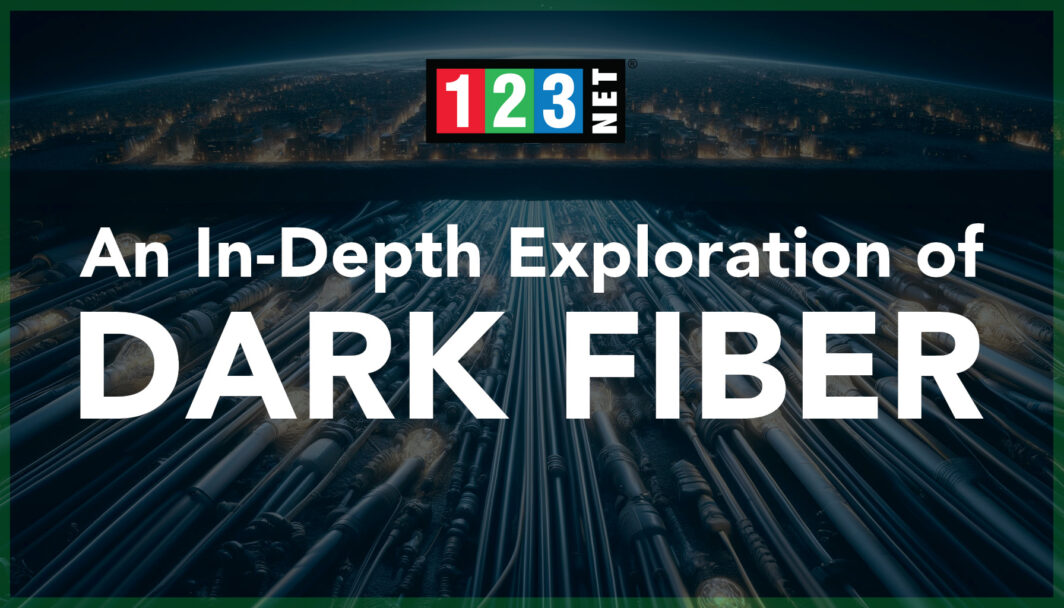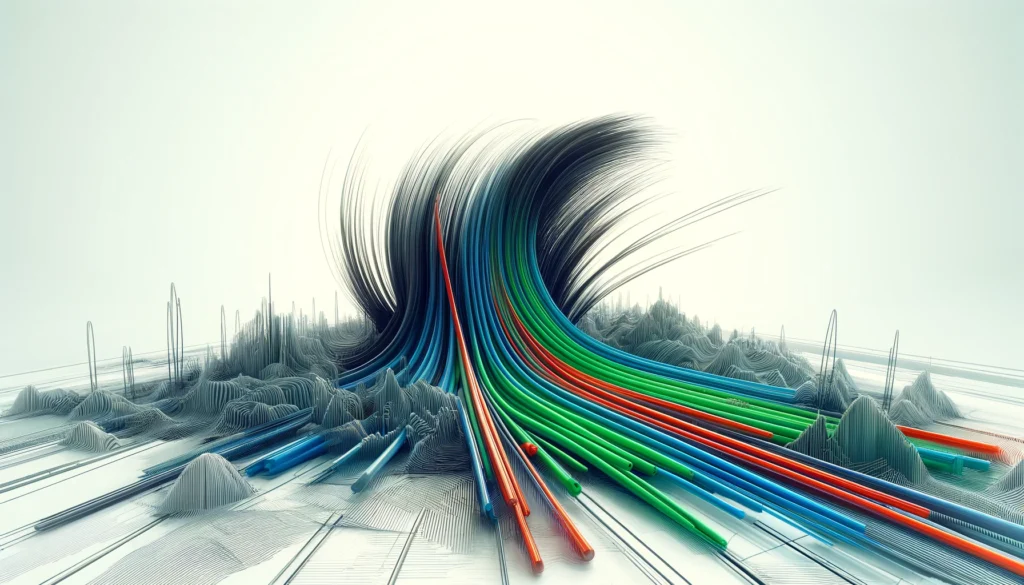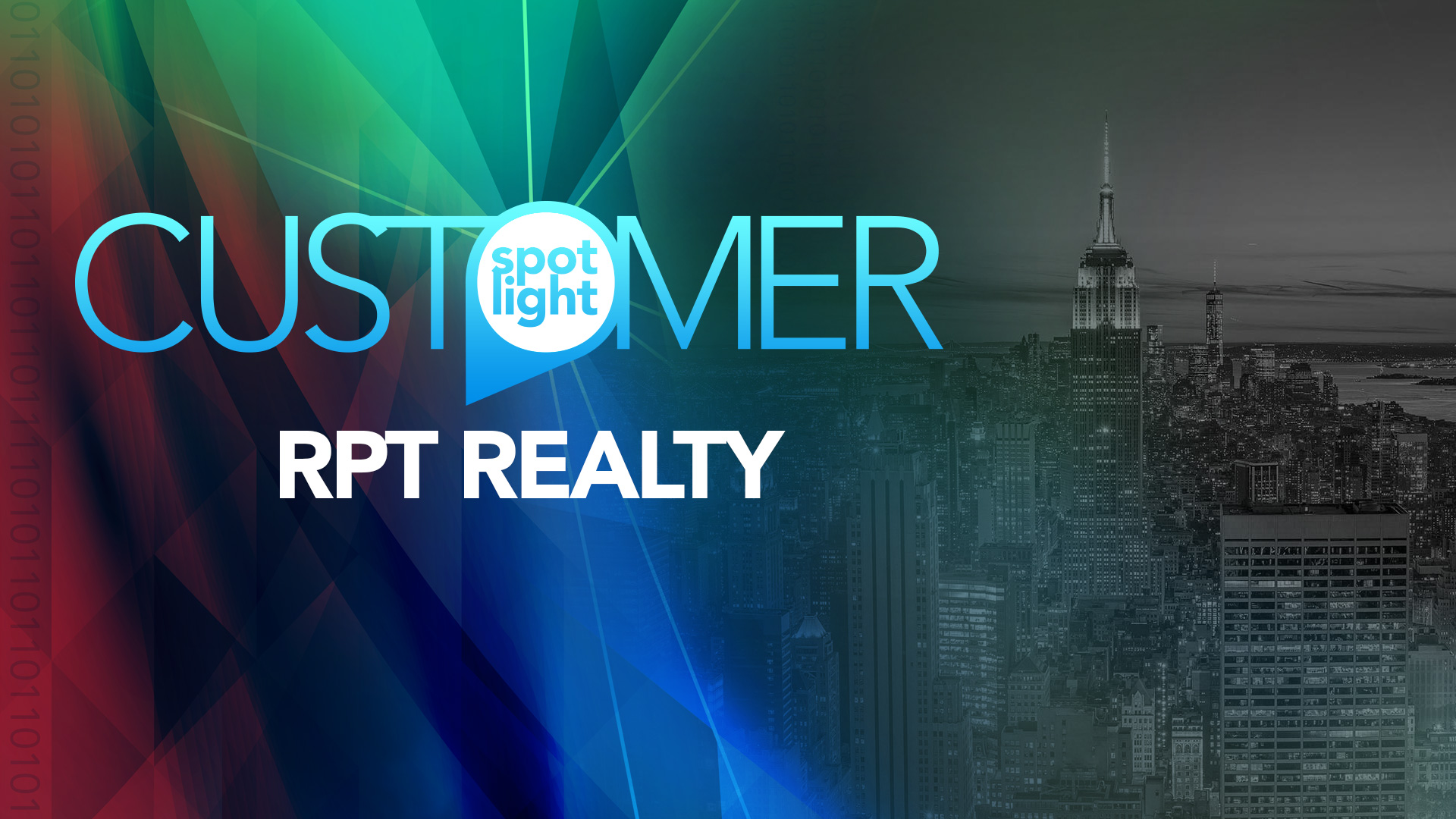
Introduction
In the vast and complex world of modern networking, dark fiber stands out as a pivotal but often overlooked component. Essentially, dark fiber refers to unused fiber-optic cables that are laid underground or underwater but are not currently active or lit by data signals. Its significance in modern networking cannot be understated. Dark fiber offers an unparalleled potential for bandwidth expansion. This network customization, and future-proofing infrastructure amidst the exploding demand for high-speed internet and data services. This exploration delves shedding light on its mechanics, advantages, applications, challenges, and the evolving landscape that it inhabits.
The Basics of Dark Fiber
What is Dark Fiber?
Dark fiber, an intriguing element within the fiber-optic infrastructure. It is characterized by its dormant state, not currently being used to transmit data signals. This facet of fiber-optic technology stands as a testament to the foresight of telecommunications companies. During the expansive growth phases of network development, they laid down more cables than were immediately necessary. Their rationale was to future-proof infrastructure against the inevitable upsurge in demand for data transmission capacity. Thus avoiding the disruption and expense of subsequent installations.
Historical Context and Evolution
The genesis of dark fiber can be traced back to the latter part of the 20th century. This was a time when fiber-optic technology was undergoing rapid development and deployment. As telecommunications infrastructure sprawled across and beneath urban and rural landscapes, companies frequently opted to install excess capacity. This practice wasn’t merely a hedge against future needs but also an optimistic bet on the technological and digital explosion. Indeed, this period’s strategies have endowed the modern digital age with a rich vein of resources ripe for exploitation.
How Does Dark Fiber Work?
The operational essence of dark fiber lies in its potential. Unlike active cables that are lit by data-carrying light signals. Dark fiber remains unutilized until an entity decides to harness its capabilities. By leasing these dormant cables, organizations can weave their own private broadband networks. this is effectively commandeering a direct route for data transmission. This autonomy allows for precise control over the network’s operational parameters, such as the paths data travels, its speed, and the bandwidth available. Crucially, this setup is insulated from the congestion and security vulnerabilities that can afflict shared or public networks.
In essence, dark fiber presents a unique opportunity. It’s a resource that, despite its inert state, offers a canvas on which organizations can paint their bespoke telecommunications solutions. This capability is especially valuable in an era where data throughput and network reliability are paramount. By tapping into dark fiber, entities not only capitalize on the foresight of yesteryears’ network expansion but also align themselves with the future’s ever-growing demand for robust, scalable, and secure data transmission channels.
Benefits of Using Dark Fiber
Cost-Effectiveness Over Time
The utilization of dark fiber in telecommunications represents a strategic investment that transcends initial financial considerations. It is mapping a trajectory toward substantial long-term savings and operational autonomy. At first glance, the capital outlay required to access and operationalize dark fiber infrastructure might appear daunting. However, this perspective shifts markedly when juxtaposed with the enduring benefits that accrue over time. Chief among these is the mitigation of ongoing expenditure typically associated with leasing bandwidth from external service providers. By integrating into their operational framework, organizations sidestep the recurrent financial burdens tethered to conventional data services. It is substituting them with a model that emphasizes capital investment in infrastructure that pays dividends in cost efficiency and performance stability over the years.
Customization and Control
The allure of dark fiber extends beyond mere cost considerations, encompassing the realms of customization and network sovereignty. Entities that pivot to avail themselves of an unprecedented degree of control over their telecommunications infrastructure. This level of autonomy facilitates the creation of highly customized network configurations. It is meticulously tailored to align with specific operational objectives and security protocols. The adaptability inherent in dark fiber networks means that businesses can sculpt their data transmission and handling frameworks to perfection. This is ensuring optimal performance and integrity.
Scalability and Flexibility
Moreover, it stands as a beacon of scalability and flexibility in the fast-evolving landscape of digital communications. The dynamic nature of today’s data-driven environments necessitates an infrastructure capable of accommodating burgeoning bandwidth requirements with agility. Dark fiber answers this call, offering organizations the ability to scale their network capacity in concert with their evolving demands. This scalability ensures that businesses remain poised to capitalize on emerging opportunities and navigate the challenges of an increasingly data-intensive world, thereby securing a competitive edge in the digital arena. In essence, the strategic deployment lays the groundwork for a future-proof network architecture, melding cost-effectiveness with unparalleled customization, control, scalability, and flexibility.
Dark Fiber Applications
Telecommunications Backbone
Dark fiber, an underutilized asset within the realm of telecommunications, plays a critical role in shaping the backbone of the global communication network. This silent facilitator of data transfer operates behind the scenes, supporting the colossal demand for data transmission that underpins everything from internet browsing to international business operations. Its significance is rooted in its capacity to provide a dedicated, high-capacity conduit for data, which is indispensable in an era defined by digital connectivity and vast data exchange volumes.
Private Networking for Businesses
In the corporate sphere, dark fiber emerges as a powerful tool for establishing private networks. Businesses across various sectors are increasingly tapping into this resource to create bespoke, secure communication channels. By leveraging dark fiber, companies can interconnect their operations across disparate geographical locations, ensuring not just speed and reliability but also a level of security that is often unattainable through public internet connections. This private networking capability is particularly valuable for entities handling sensitive information or requiring constant, unfettered access to data across their operational footprint, providing a strategic edge by fostering a seamless and secure information flow.
Internet Service Providers (ISPs) and Cable Companies
Furthermore, Internet Service Providers (ISPs) and cable companies integrate dark fiber into their infrastructure to amplify their service offerings. The intrinsic properties allows for significant enhancements in bandwidth capacity and network redundancy, directly translating to improved service quality for end-users. For ISPs and cable operators, it is not just a means to expand service capabilities but also a strategic asset in optimizing network performance and reliability. By bolstering their infrastructure with dark fiber, these providers can offer higher data transmission rates, accommodate increasing user demands, and ensure a more resilient network that stands up to challenges, from technical glitches to physical damage.
Through its pivotal roles in underpinning the telecommunications backbone, enabling private networking for businesses, and enhancing ISP and cable company networks, dark fiber underscores its indispensability in the modern digital landscape. It represents a key ingredient in the quest for more robust, secure, and scalable telecommunications infrastructure, driving forward the capabilities of global communication networks.
Challenges and Considerations of Dark Fiber
Installation and Maintenance Costs
Venturing into the realm of dark fiber infrastructure is not without its financial and operational challenges. This is demanding meticulous strategic planning and a nuanced understanding of the technical and regulatory environment. The initial phase of installing dark fiber networks is often marked by significant expenditure. This includes not only the physical laying of cables but also the associated costs of planning, and permits. Sometimes even construction work to make the physical space network-ready. For organizations considering a solution to their telecommunications needs, these upfront costs necessitate a comprehensive evaluation of long-term benefits. This is against immediate financial outlays. Additionally, the ongoing maintenance of these networks introduces another layer of operational expenses. This can be from routine checks to ensure network integrity to more substantial repairs following environmental wear or physical damage.
Technical Expertise Required
Beyond the fiscal aspects, the successful deployment and management of a dark fiber network hinge on a reservoir of technical expertise. The complexity of designing, implementing, and overseeing such a network requires not just a foundational understanding of fiber-optic technology but also specialized knowledge in network configuration and optimization. Organizations often find themselves in need of seasoned professionals or the services of external partners. They can navigate the intricacies of dark fiber networking, ensuring that the infrastructure meets both current and future requirements.
Regulatory and Legal Hurdles
Complicating matters further is the labyrinth of regulatory and legal considerations surrounding dark fiber. Securing the necessary permissions for installation, which might include navigating right-of-way issues or adhering to local and national telecommunications regulations, poses its own set of challenges. These hurdles are not just bureaucratic obstacles but also critical factors that can influence the timeline, cost, and feasibility of dark fiber projects.
Together, these elements—the financial implications of installation and maintenance, the demand for high-level technical expertise, and the complex regulatory landscape—form a triad of considerations that organizations must navigate when embarking on dark fiber initiatives. Successfully addressing these challenges is essential for leveraging the considerable advantages offers in terms of network performance, scalability, and control.

Future of Dark Fiber
Technological Advancements
The landscape of fiber-optic technology is continuously evolving, with innovations that are set to significantly bolster the utility and appeal. Breakthroughs in the way data is transmitted and how much can be carried along fiber-optic cables are pivotal. Techniques such as dense wavelength division multiplexing (DWDM) expand the capacity of these cables without the need for additional physical infrastructure. It is directly impacting the efficiency and capability of dark fiber networks. This technological progression not only enhances the existing infrastructure but also makes the prospect of investing in dark fiber more attractive for organizations seeking scalable and future-proof networking solutions.
Market Trends and Demand
Parallel to these technological strides, market dynamics underscore a surging demand for dark fiber solutions. This upswing is primarily fueled by an insatiable appetite for high-speed internet and the expansion of broadband networks. It is to support an increasingly connected world. The pivot towards remote work, cloud computing, and the proliferation of data-intensive services have underscored the necessity for a resilient and capacious telecommunications backbone. As a result, dark fiber is emerging as a cornerstone technology that can meet these demands head-on. It is offering the bandwidth and reliability that modern digital ecosystems require.
The confluence of advancing technologies and shifting market needs signals a robust future. These trends not only validate the growing investment in dark fiber networks but also highlight the technology’s critical role in facilitating the next wave of digital transformation and connectivity on a global scale.
FAQs on Dark Fiber
- What is dark fiber used for? A: Dark fiber is utilized for creating private broadband networks, enhancing telecommunications infrastructure, and expanding network scalability and redundancy.
- How is dark fiber different from regular fiber? A: It refers to unused, unlit fiber-optic cables, whereas regular fiber is actively used for data transmission.
- Can anyone buy or lease dark fiber? A: Typically, businesses, ISPs, and telecommunications companies lease dark fiber, but availability and regulations vary by location.




